The Seven Body Types Explained
Each body type has its own unique characteristics, advantages, and styling opportunities. Find your type and learn how to make the most of your natural shape.
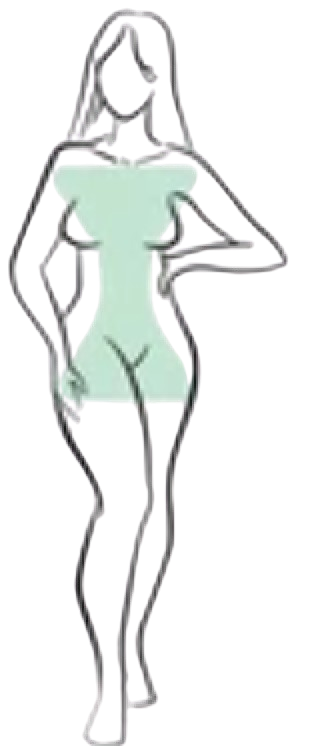
Hourglass
Key Characteristics
- Bust and hips are nearly equal in measurement
- Well-defined waist that's significantly smaller
- Balanced upper and lower body proportions
- Curves in all the right places
Styling Tips
- Emphasize your waist with fitted clothing
- Choose clothing that follows your natural silhouette
- Avoid boxy or shapeless garments
- Belt dresses and tops to highlight your waist
Fitness Advice
- Focus on maintaining overall muscle tone
- Combine cardio with strength training
- Pilates and yoga for core strength
- Avoid bulking exercises that hide your waist
Nutrition Tips
- Balanced diet with portion control
- Focus on lean proteins and healthy fats
- Regular meal timing to maintain metabolism
- Stay hydrated to maintain skin elasticity
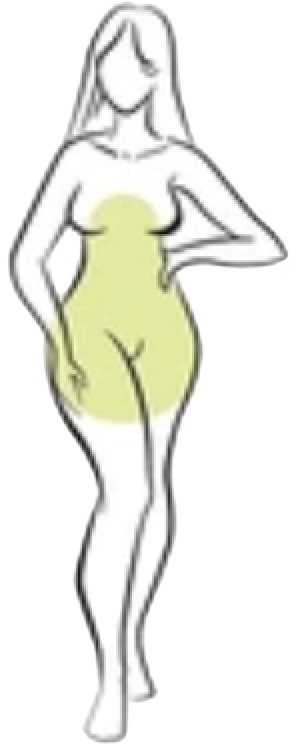
Triangle (Pear)
Key Characteristics
- Hips are wider than bust and shoulders
- Smaller upper body with fuller lower body
- Weight tends to accumulate in hips and thighs
- Narrow shoulders and defined waist
Styling Tips
- Add volume to your upper body with structured tops
- Choose A-line skirts and bootcut pants
- Wear bright colors and patterns on top
- Avoid tight-fitting bottoms that emphasize hips
Fitness Advice
- Upper body strength training to balance proportions
- Cardio exercises like running and cycling
- Core workouts for overall stability
- Avoid heavy lower body weight training
Nutrition Tips
- Reduce refined carbohydrates
- Increase protein intake for muscle building
- Include healthy fats like avocados and nuts
- Focus on anti-inflammatory foods
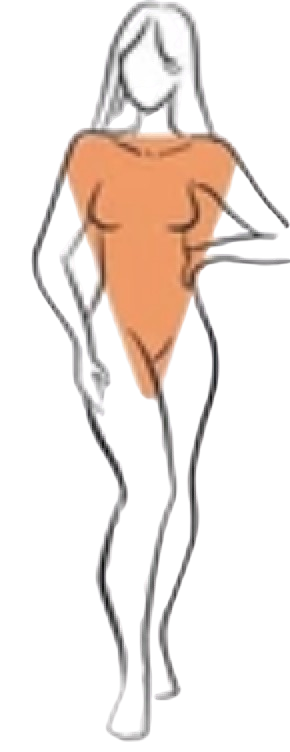
Inverted Triangle
Key Characteristics
- Broader shoulders and bust than hips
- Athletic build with strong upper body
- Narrower hips and straighter waist
- Weight typically carried in upper body
Styling Tips
- Add volume to your lower body with wide-leg pants
- Choose tops that don't add bulk to shoulders
- Wear darker colors on top, brighter on bottom
- Emphasize your legs with fitted bottoms
Fitness Advice
- Focus on lower body strengthening exercises
- Include squats, lunges, and hip thrusts
- Limit upper body bulking exercises
- Add flexibility training like yoga
Nutrition Tips
- Maintain steady energy with complex carbs
- Include lean proteins for muscle maintenance
- Focus on foods that support recovery
- Stay consistent with meal timing
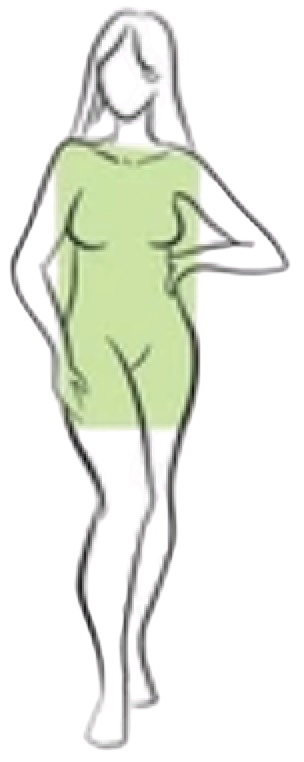
Rectangle
Key Characteristics
- Bust, waist, and hips are similar in measurement
- Straight, athletic silhouette
- Less defined waist
- Evenly distributed weight
Styling Tips
- Create curves with fitted clothing
- Add belts to define your waist
- Layer clothing to add dimension
- Choose clothing with interesting details
Fitness Advice
- Full-body strength training
- Focus on building muscle mass
- Include compound movements
- Add functional fitness exercises
Nutrition Tips
- Balanced macronutrients for muscle building
- Include protein with every meal
- Complex carbohydrates for energy
- Healthy fats for hormone production

Top Hourglass
Key Characteristics
- Bust is larger than hips
- Well-defined waist
- Balanced proportions with upper body emphasis
- Fuller bust with narrower hips
Styling Tips
- Balance proportions with fitted bottoms
- Choose supportive, well-fitted bras
- Avoid oversized tops that hide your waist
- Add volume to your lower body
Fitness Advice
- Lower body strengthening exercises
- Core stability workouts
- Moderate upper body training
- Include posture-improving exercises
Nutrition Tips
- Anti-inflammatory foods for hormonal balance
- Include omega-3 fatty acids
- Focus on antioxidant-rich foods
- Maintain consistent meal patterns
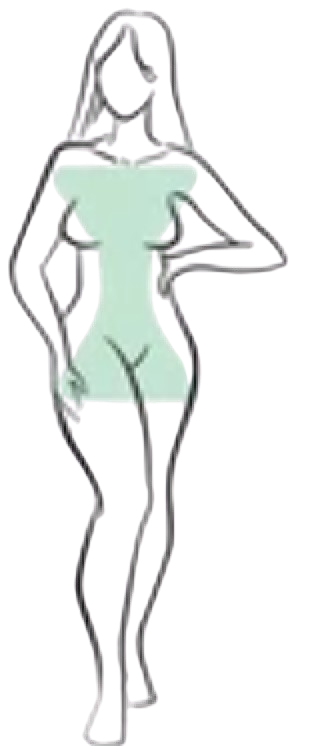
Bottom Hourglass
Key Characteristics
- Hips are larger than bust
- Well-defined waist
- Balanced proportions with lower body emphasis
- Fuller hips with smaller bust
Styling Tips
- Add structure to your upper body
- Choose fitted waists with flared bottoms
- Use colors and patterns to highlight your top
- Avoid clingy fabrics on your lower body
Fitness Advice
- Upper body strength training
- Core workouts for stability
- Cardio for overall fitness
- Flexibility training for hip mobility
Nutrition Tips
- Focus on lean proteins
- Include metabolism-boosting foods
- Complex carbohydrates for sustained energy
- Stay hydrated throughout the day
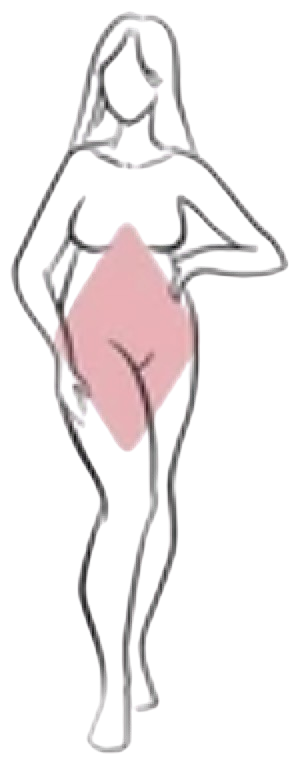
Spoon
Key Characteristics
- Hips are significantly larger than bust
- Defined waist with prominent hip shelf
- Weight concentrates in hips and upper thighs
- Smaller upper body frame
Styling Tips
- Create upper body volume with structured pieces
- Choose high-waisted bottoms
- Use patterns and colors on your upper body
- Avoid tight-fitting pants that emphasize hip width
Fitness Advice
- Upper body muscle building
- Cardio exercises for overall health
- Core strengthening for posture
- Avoid excessive lower body weight training
Nutrition Tips
- Reduce processed foods and sugar
- Include anti-inflammatory foods
- Focus on protein and healthy fats
- Practice portion control
Frequently Asked Questions
Common questions about body types and how to work with your natural shape.
While your basic bone structure remains the same, your body type can appear to change due to weight fluctuations, muscle development, hormonal changes, and aging. Regular exercise and a healthy diet can help you achieve your best version of your natural body type.
Body type classifications are helpful guidelines rather than strict rules. Many people fall between categories or have unique characteristics. Use these guidelines as a starting point, but remember that personal preference and individual style matter most.
Body type guidelines are suggestions to help you understand what might be most flattering, but personal style, comfort, and confidence are equally important. Feel free to experiment and wear what makes you feel good, regardless of traditional "rules."
While the basic concepts are similar, men and women typically have different body type classifications due to differences in fat distribution and muscle development patterns. Our calculator and advice can be adapted for different body compositions.
